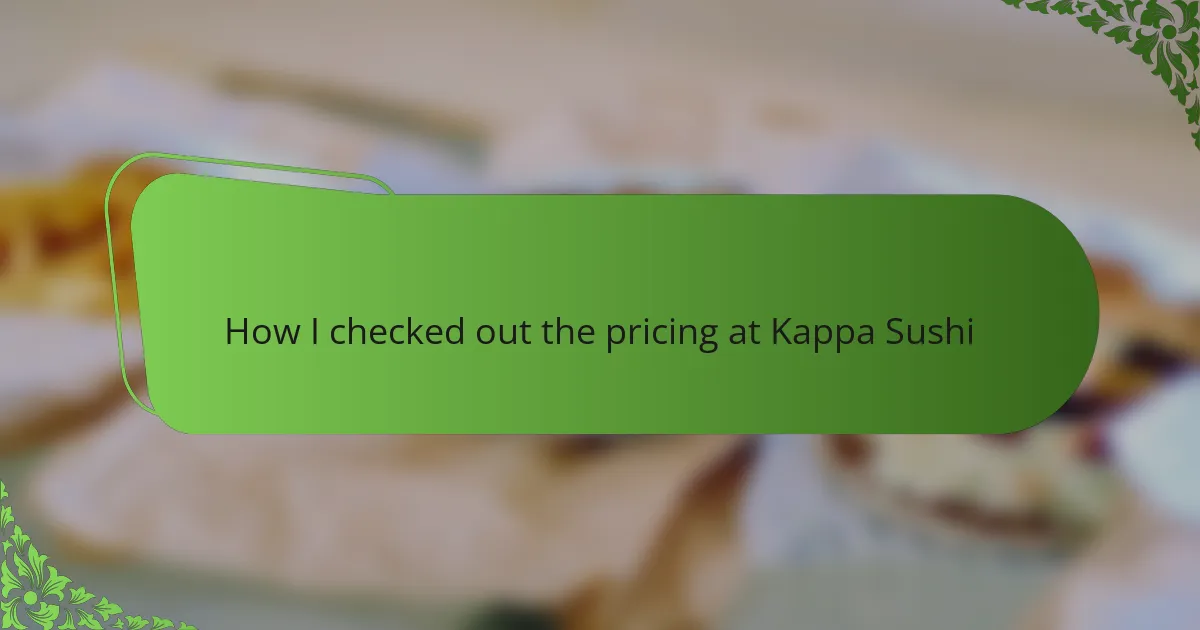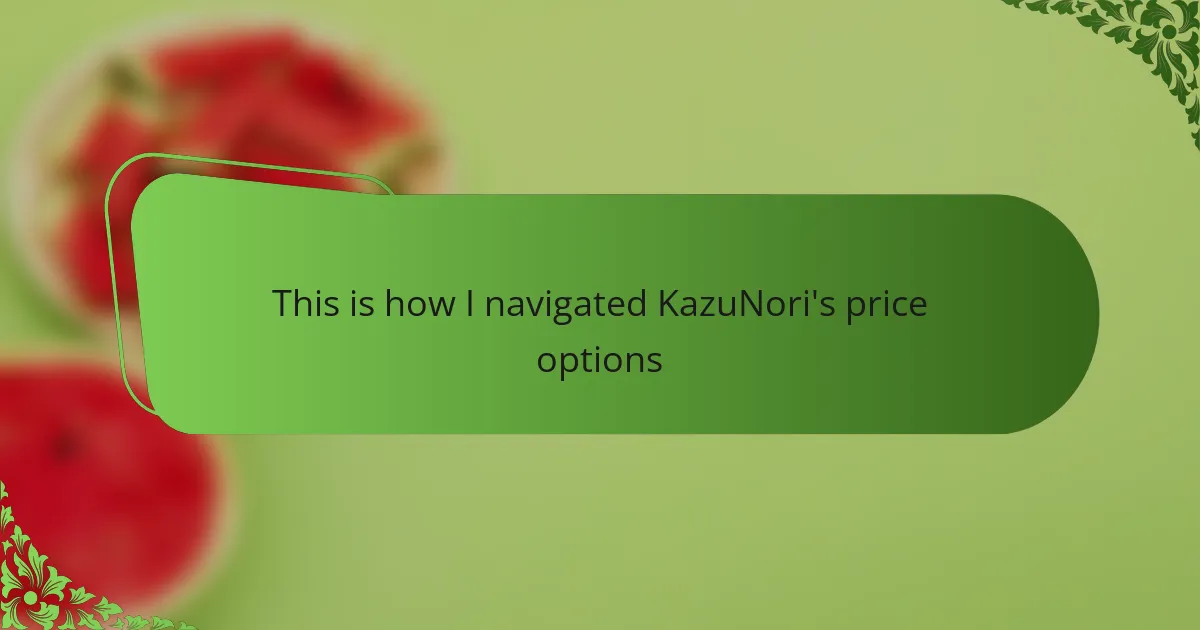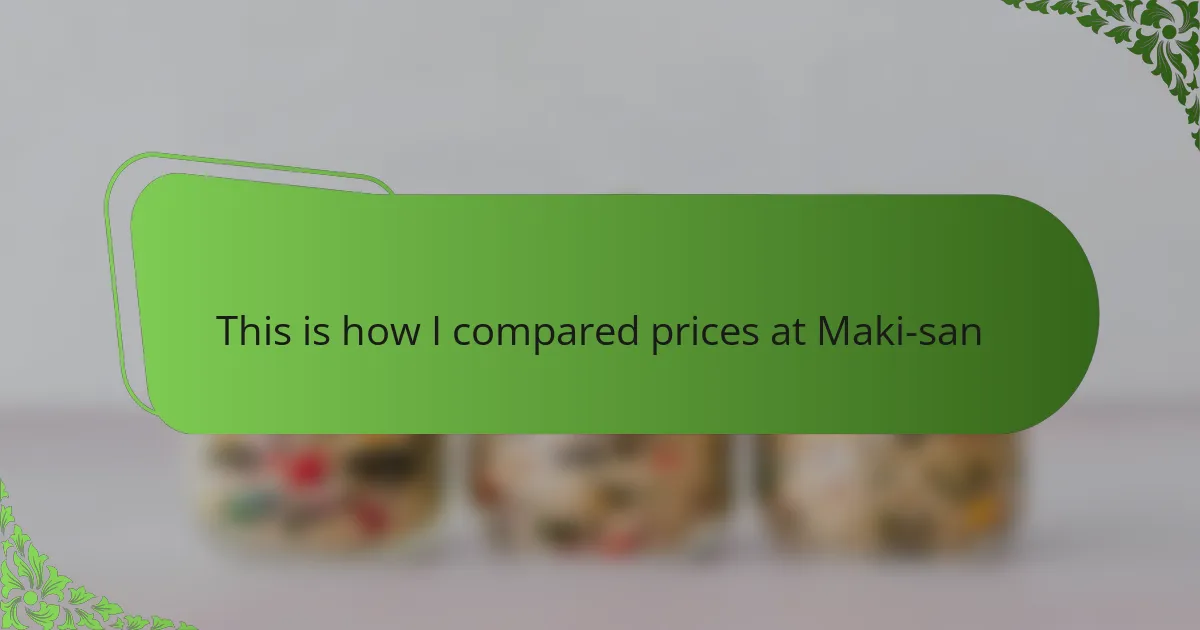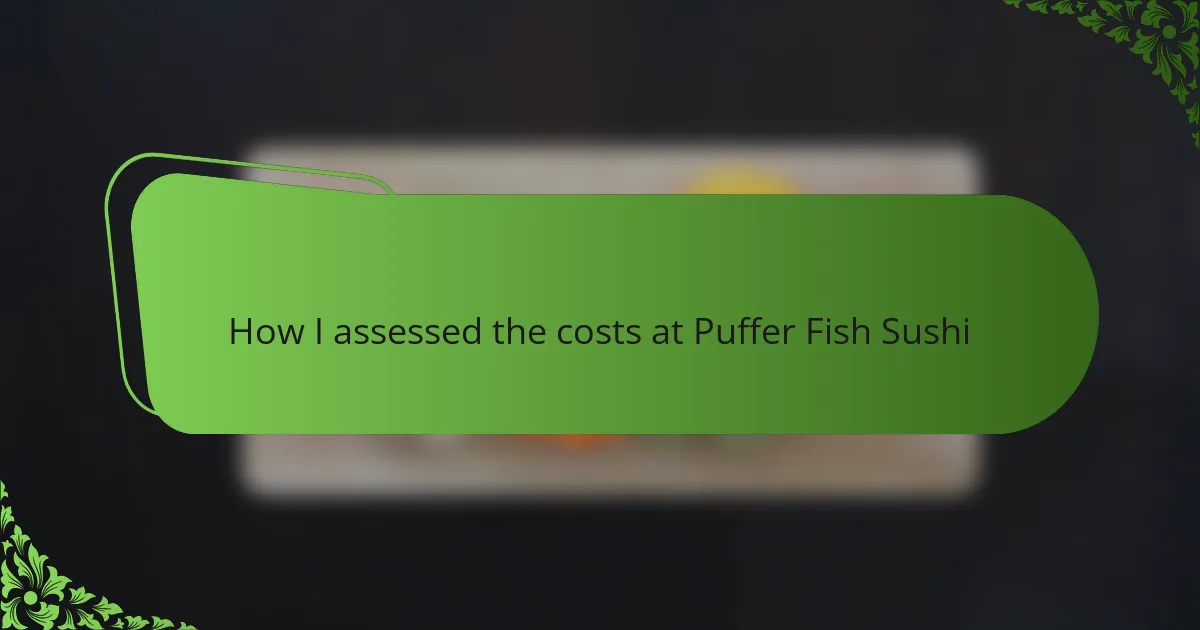Key takeaways
- Sushi pricing reflects the quality of ingredients, sourcing, location, and the chef’s skill, with a focus on fresh and ethical seafood.
- Kappa Sushi offers a balanced menu featuring both classic and unique options, with transparent pricing across categories like nigiri, sashimi, and rolls.
- To dine on a budget, consider lunch specials, focus on simpler dishes like nigiri, and share dishes with friends to enhance the experience without overspending.
- The overall dining experience at Kappa Sushi emphasizes quality and craftsmanship, making it feel worth the investment despite higher prices.
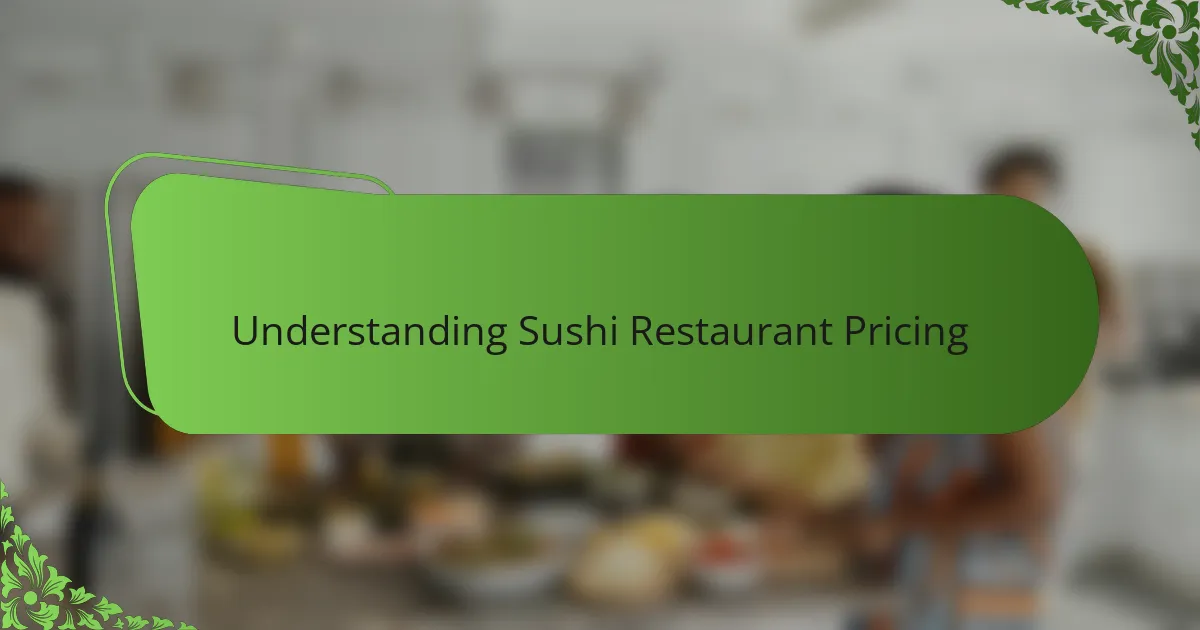
Understanding Sushi Restaurant Pricing
When I first started exploring sushi spots, I quickly realized that pricing isn’t just about the fish; it’s a mix of location, ingredient quality, and even the chef’s reputation. Have you noticed how some places charge more for a simple roll compared to others? It made me wonder if I was paying for the ambiance or the artistry behind each piece.
One thing I found fascinating is how restaurant pricing often reflects the sourcing of their seafood. For example, wild-caught fish usually commands a higher price because of its flavor and sustainability. This made me appreciate the extra dollars spent at places that prioritize freshness and ethical sourcing, even if it means hitting the wallet a bit harder.
Sometimes, the pricing seems steep, but then I remind myself that sushi is as much an experience as it is a meal. The time invested in perfecting knife skills or creating the ideal rice texture subtly influences the cost. Don’t you think that craftsmanship deserves recognition in the price tag? That’s a perspective I keep in mind whenever I’m checking out sushi menus.
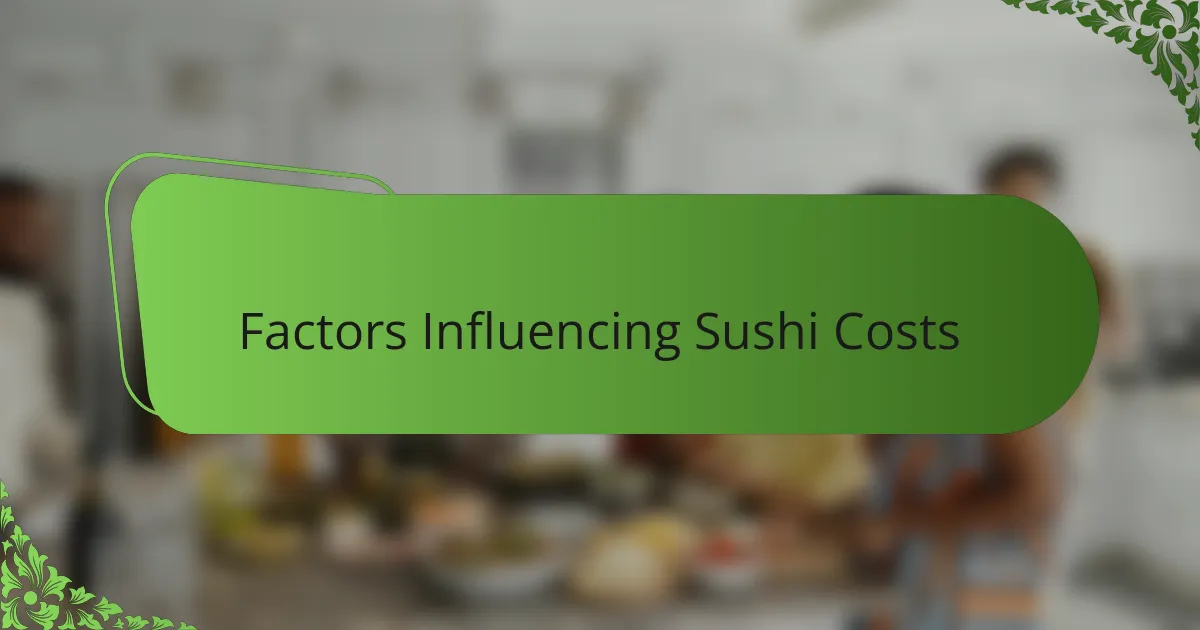
Factors Influencing Sushi Costs
Ingredients truly set the tone for sushi prices. I recall visiting Kappa Sushi and noticing how the use of seasonal, rare fish like toro or uni instantly raised the cost. It’s like paying a little extra for that burst of flavor that only premium ingredients can deliver.
Location also plays a sneaky role in pricing. When I compared Kappa Sushi’s prices to a similar spot downtown, it hit me how rent and local demand subtly inflate the bill. Ever wondered why sushi near the waterfront or in trendy neighborhoods often costs more? I think it’s a mix of convenience and the vibe the place offers.
Lastly, the chef’s skill can make or break the value you get. Watching a talented sushi chef at Kappa wield a knife with precision reminded me that years of training aren’t cheap. When I’m paying higher prices, I try to see it as investing in an art form, not just a meal. Don’t you agree that a masterfully crafted nigiri feels worth every penny?

Overview of Kappa Sushi Menu
When I glanced through the Kappa Sushi menu, I was struck by its balance between classic favorites and adventurous options. Have you ever noticed how some places stick to the basics, while others invite you to explore rolls with unexpected ingredients? Kappa Sushi definitely leans into variety, which makes choosing a challenge—in a good way.
What really caught my eye was how the menu highlighted seasonal specials, clearly emphasizing freshness. I appreciated seeing dishes like salmon belly or fresh eel paired with clear descriptions, which helped me understand what I was paying for. It’s moments like these that make me feel more confident about spending a bit extra.
The pricing structure itself was straightforward, with clear sections for sashimi, nigiri, and specialty rolls. I remember wondering if the prices matched the quality I’ve come to expect from similar sushi joints. That curiosity kept me glued to the menu longer than usual, eager to see how Kappa balanced value and taste.
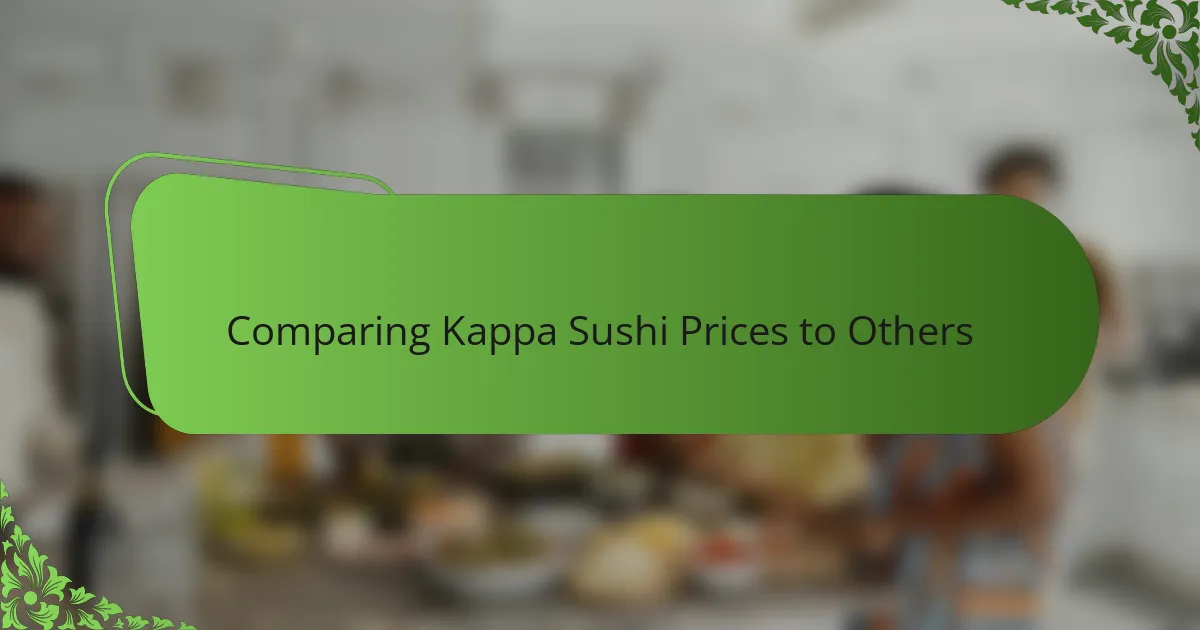
Comparing Kappa Sushi Prices to Others
When I lined up Kappa Sushi’s prices against a few other local spots, I noticed their mid-range tags stood out. It wasn’t the cheapest, but also not as flashy as some high-end places. Have you ever felt this tug-of-war between wanting quality and keeping the bill reasonable? That’s exactly what I was weighing here.
What surprised me was how some rolls at Kappa came in slightly cheaper than expected compared to cafes that boast about exotic ingredients. I think it shows they strike a balance—offering decent quality without leaning too heavily on premium pricing. It made me curious if that approach keeps regulars happy more than rare delicacies ever could.
On the flip side, some specialty items at Kappa carried a price premium that’s hard to ignore. Yet, I caught myself justifying it because those unique flavors aren’t something you find everywhere. Doesn’t it strike you that sometimes paying a bit extra feels like an investment in a memorable dining experience? For me, those moments add real value beyond the sticker price.

Personal Experience at Kappa Sushi
I remember the first time I sat at Kappa Sushi’s counter, watching the chef prepare each piece with such care. There was this quiet confidence in his movements that made me feel like I was about to taste something truly special—even before the food arrived. Have you ever had that sensation where the atmosphere alone ups your excitement for a meal?
While checking the prices, I admit I hesitated a little; it wasn’t the cheapest experience I’ve had, but something about the menu made me trust that each dollar mattered. When my order arrived, the freshness was undeniable, and suddenly the numbers on the menu felt less like a cost and more like a promise kept. Isn’t that the magic of a restaurant that knows how to deliver value?
By the end of my visit, I was reflecting on how Kappa Sushi balances its pricing with a genuine experience. It’s not just about affordability but about feeling like you’re investing in quality and skill. Don’t you think that matters more than just finding the cheapest sushi in town? For me, that’s what makes a dining experience at Kappa memorable and worth repeating.
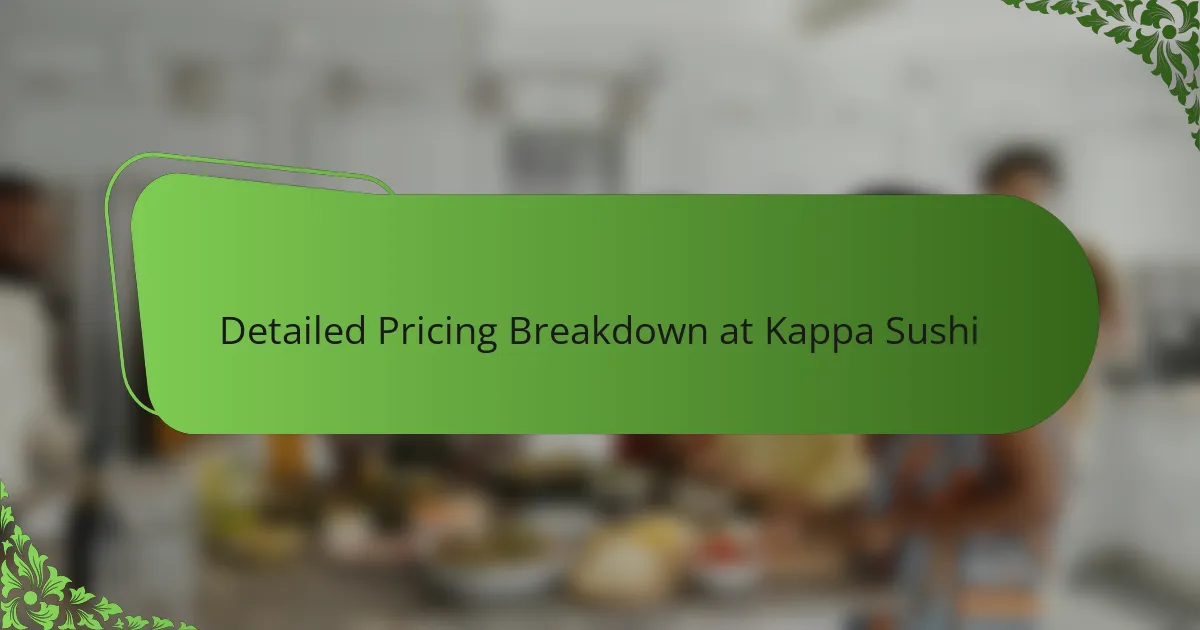
Detailed Pricing Breakdown at Kappa Sushi
When I took a closer look at Kappa Sushi’s pricing, I noticed the menu was smartly divided by categories—nigiri, sashimi, rolls, and specials—with each section showing clear price points. It felt refreshing to see transparency; no hidden surprises, just a straightforward presentation that made budgeting for a meal easier in my eyes.
Something that stood out to me was how individual nigiri pieces were priced between $3 and $8, depending on the type of fish. For example, salmon was on the lower end, while premium options like toro came with a heftier price tag. It made me think about how each bite is priced according to rarity and craftsmanship—and personally, I found that fair given the quality.
I also enjoyed spotting the combo platters, which offered multiple pieces at a set price, often presenting better value when I was a bit undecided or simply wanted to try more variety. Have you ever felt that ordering a platter takes some pressure off figuring out the cost while letting you savor a range of flavors? That’s exactly how I felt at Kappa Sushi—it’s like they wanted every diner to feel delighted without stressing over every dollar.
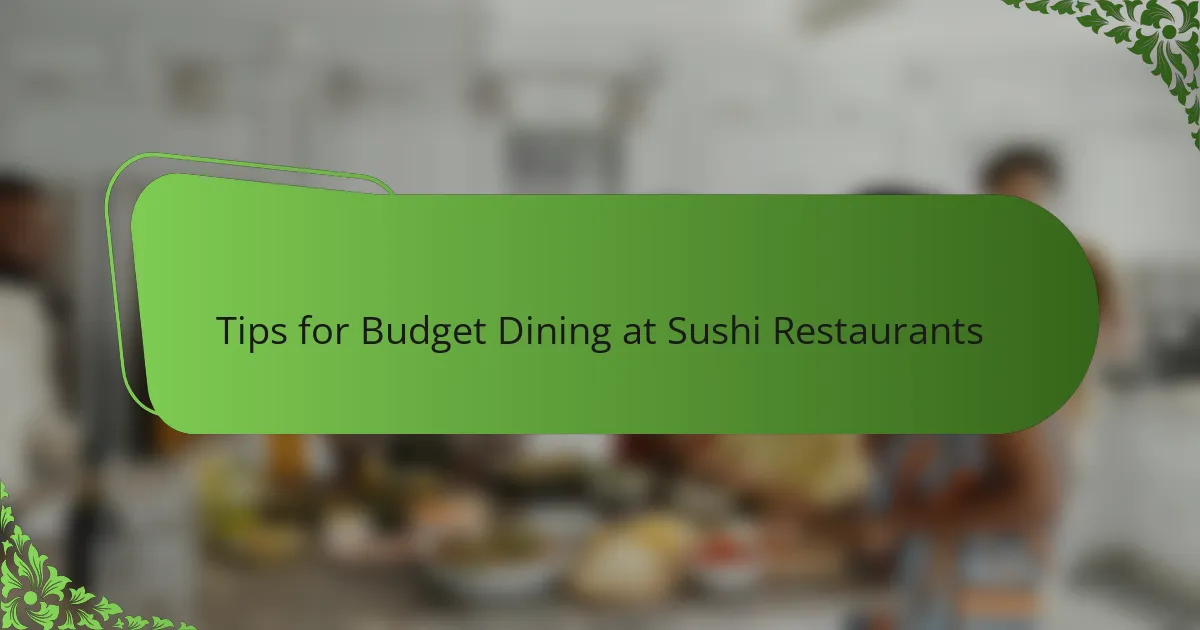
Tips for Budget Dining at Sushi Restaurants
One tip I’ve learned for budget dining at sushi joints is to keep an eye out for lunch specials or early bird offers. I’ve found that many places, including some I’ve tried near Kappa Sushi, serve smaller portions or combos at a fraction of the dinner price. Have you ever stumbled upon a lunchtime deal that made you realize sushi doesn’t always have to break the bank?
Another strategy that’s worked well for me is to focus on nigiri or sashimi rather than elaborate rolls. It might sound simple, but skipping those fancy rolls packed with cream cheese or tempura can save a surprising amount. Plus, it lets you appreciate the fish’s true flavor without distractions—a win-win if you ask me.
Lastly, don’t underestimate the value of sharing. When dining with friends, splitting combo platters or specialty rolls can stretch your budget while letting everyone sample more variety. I remember once sharing a few platters at a sushi spot and feeling like I got a fuller experience without blowing my budget. Isn’t that a clever way to enjoy more tastes and keep costs down?
